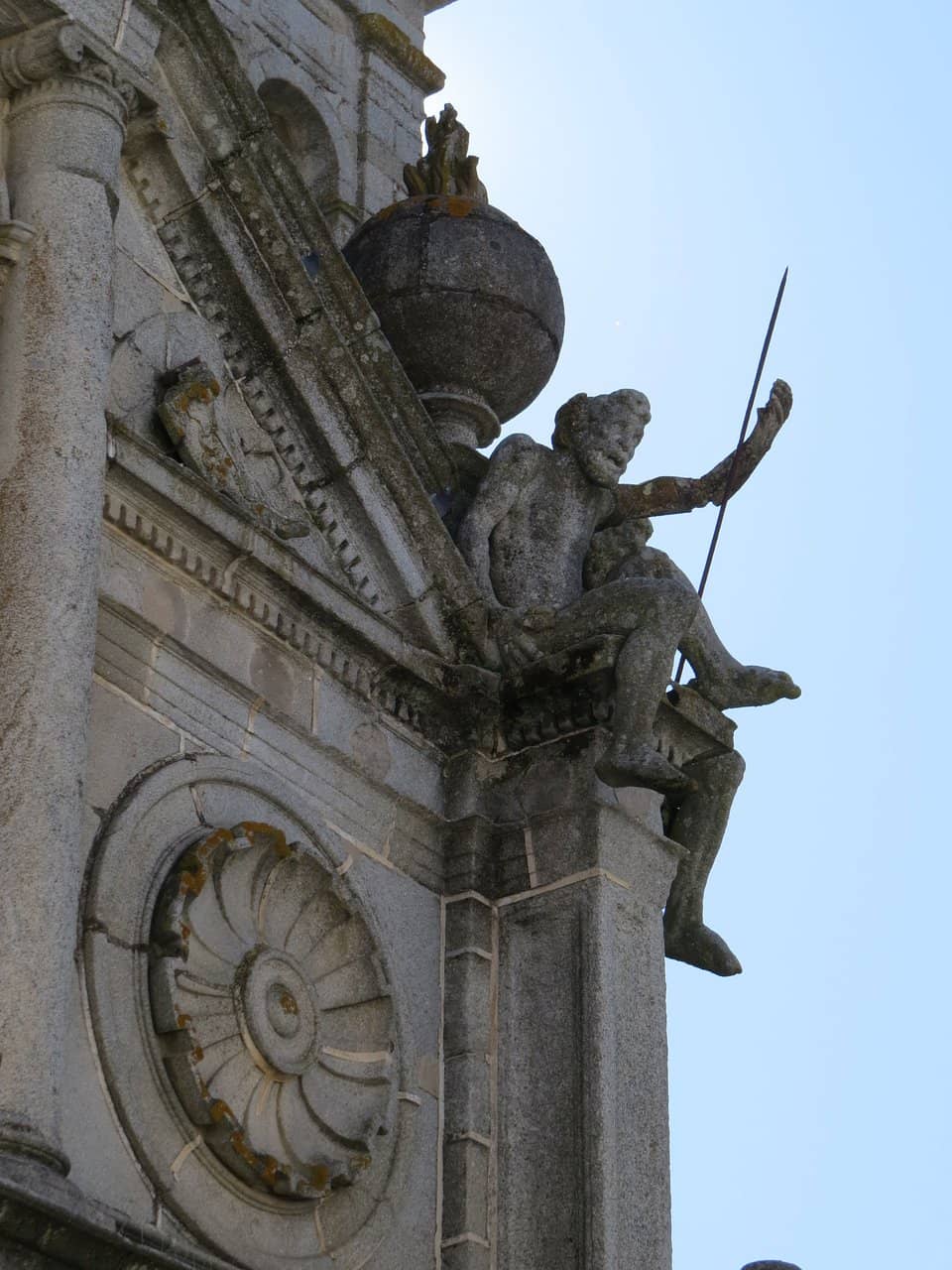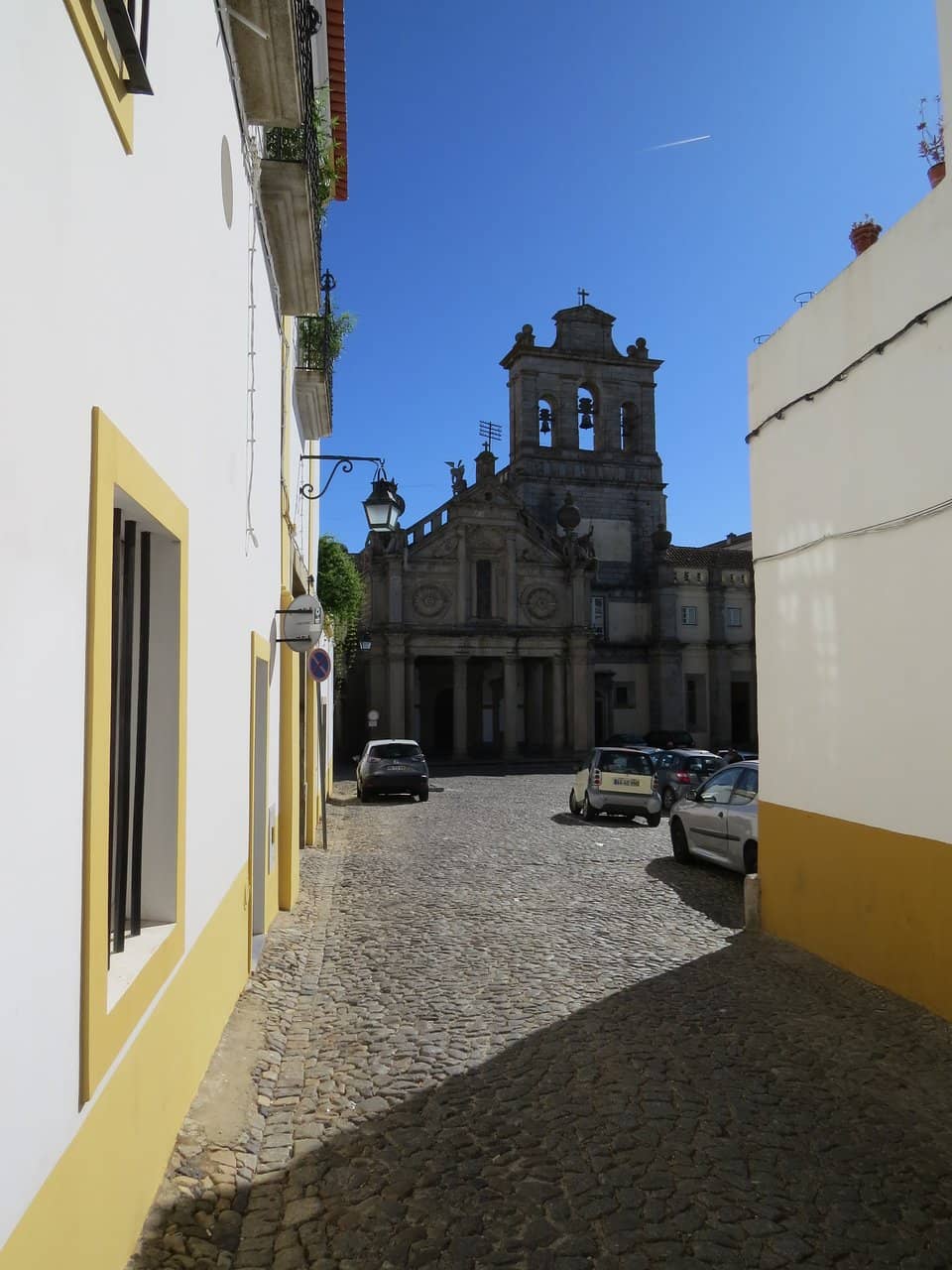
Igreja da Graça Convento da Graça
Évora's Igreja da Graça boasts a pioneering Mannerist facade, famed for its monumental 'Atlantes' (Giants).

Highlights
Must-see attractions

Social
From TikTok & Reddit
Best Time
Higher chance of interior access

Igreja da Graça Convento da Graça
Best Time
Higher chance of interior access

Highlights
Must-see attractions
Évora's Igreja da Graça boasts a pioneering Mannerist facade, famed for its monumental 'Atlantes' (Giants).
"A truly unique facade with colossal giants, a must-see architectural marvel in Évora."

Check Opening Hours
Interior access can be tricky; it's often closed on Sundays. Try to confirm hours beforehand. :clock1:
Admire the Giants
The 'Atlantes' on the facade are a must-see! They're a key feature of its unique architecture. :statueofliberty:

Highlights
Discover the most iconic attractions and experiences

Mannerist Facade
A striking and influential Mannerist facade, a pioneering example of the style in Portugal.

The 'Atlantes' (Giants)
Main facade
Four colossal figures supporting the upper corners, giving the church a monumental and unique appearance.

Bell Tower
An interesting and picturesque element of the church's exterior architecture.
Plans like a pro.
Thinks like you
Planning Your Visit
Timing is Everything
Exterior Focus
Best Times
Insider Tips
from TikTok, Instagram & Reddit
Check Opening Hours
Interior access can be tricky; it's often closed on Sundays. Try to confirm hours beforehand. :clock1:
Admire the Giants
The 'Atlantes' on the facade are a must-see! They're a key feature of its unique architecture. :statueofliberty:
Exterior is Key
Many visitors only see the outside, which is described as picturesque and worth seeing. :camerawithflash:
Mannerist Masterpiece
Appreciate its significance as an early and influential example of Mannerist architecture in Portugal. :classical_building:
Tips
from all over the internet
Check Opening Hours
Interior access can be tricky; it's often closed on Sundays. Try to confirm hours beforehand. :clock1:
Admire the Giants
The 'Atlantes' on the facade are a must-see! They're a key feature of its unique architecture. :statueofliberty:
Exterior is Key
Many visitors only see the outside, which is described as picturesque and worth seeing. :camerawithflash:
Mannerist Masterpiece
Appreciate its significance as an early and influential example of Mannerist architecture in Portugal. :classical_building:
What Travellers Say
Reviews Summary
The Igreja da Graça in Évora is celebrated for its exceptionally unique and influential Mannerist facade, particularly its striking 'Atlantes' or Giants. While the exterior is consistently praised as picturesque and architecturally significant, many visitors find the interior access unreliable and the inside itself less remarkable. It's a key landmark for its external architectural innovation, even if seeing the inside is a gamble.
"Very beautiful church! Yet I was able to see only the exterior design. Went to Evora to visit on Sunday and unfortunately this church was closed that day."
Ekin
"The Igreja da Graça in Évora is truly unique for its striking and highly influential Mannerist facade, considered one of the earliest and most significant examples of this architectural style in Portugal. Its most distinctive elements are the four large, robust "Atlantes" or "Giants" supporting the upper corners of the main facade, giving the church a monumental and slightly idiosyncratic appearance that sets it apart from other churches of its time.
This architectural boldness and decorative originality reflect the new artistic currents of the 16th century. Furthermore, its connection to the Augustinian order and its history as a former convent add another layer to its historical significance. The blend of classical elements with an inventive, almost playful, approach to scale and form makes the Igreja da Graça an unforgettable and crucial landmark in the study of Portuguese Renaissance and Mannerist architecture"
Marek Grzywacz
"We only saw the exterior of this church. It is actually very pretty albeit a bit abandoned. The church was closed. Apparently the keys lies with some volunteers who only show up when they feel like it."
Hugo Pedro-Martins
What People Like
What People Dislike
Frequently Asked Questions
🚇 🗺️ Getting There
The Igreja da Graça is located in the historic center of Évora, Portugal. It's easily accessible on foot if you are already exploring the city's UNESCO World Heritage sites. If arriving by car, be aware that parking in the historic center can be challenging, and it's best to use designated parking areas outside the immediate vicinity and walk in. Public transport options within Évora are limited, so walking is generally the most convenient way to reach it once you're in the city.
Yes, the Igreja da Graça is relatively easy to find within Évora's compact historic center. Its distinctive facade, especially the 'Atlantes' or Giants, makes it stand out. It's often mentioned alongside other key Évora attractions, so consulting a local map or using a GPS app on your phone will guide you directly to its location.
🎫 🎫 Tickets & Entry
Generally, there is no admission fee to view the exterior of the Igreja da Graça. However, access to the interior can be restricted and may depend on volunteer availability or specific opening hours, which are not always consistently advertised. It's advisable to check locally or be prepared to admire its unique facade from the outside.
The opening hours for the interior of Igreja da Graça can be inconsistent, with reports of it being closed on Sundays and keys held by volunteers who may not always be present. Visitors often find it closed even during expected visiting times. The exterior, however, is always accessible.
Visiting the interior of Igreja da Graça can be challenging. Many visitors report finding it closed, even on days when one might expect it to be open. The keys are reportedly held by volunteers, and access is not guaranteed. It's best to manage expectations and focus on the impressive exterior.
📸 📸 Photography
Absolutely! The Igreja da Graça is highly photogenic, especially its unique Mannerist facade with the striking 'Atlantes' (Giants). The picturesque exterior makes it a popular spot for photographers looking to capture distinctive architectural details.
The best photo opportunities are centered around the main facade, focusing on the monumental 'Atlantes' and the overall architectural style. Capturing the bell tower from different angles also yields great shots. The surrounding streets offer varied perspectives of the church's presence in the city.
🎫 🏛️ Architecture & History
The Igreja da Graça is renowned for its Mannerist facade, considered one of the earliest and most significant examples of this style in Portugal. It features classical elements combined with inventive scale and form, notably the 'Atlantes' supporting the facade.
Historically, the Igreja da Graça is significant for its pioneering Mannerist architecture and its connection to the Augustinian order as a former convent. Its unique design reflects the artistic shifts of the 16th century in Portugal.
The Igreja da Graça was built in the 16th century, reflecting the architectural trends of the time. While specific architects are often debated for historical buildings, its design is attributed to the Mannerist period, influenced by the Augustinian order.
For Different Travelers
Tailored advice for your travel style
Architecture Enthusiasts
While interior access can be unreliable, the exterior itself is a masterpiece. Spend time appreciating the details of the facade, the bell tower, and the overall composition. It's a prime example of how architects of the period pushed boundaries and created visually dynamic structures. The church's historical context as a former convent also adds depth to its architectural significance.
Day-Trippers to Évora
Take time to admire the unique Mannerist facade and the impressive 'Atlantes.' It's a quick yet memorable stop that offers a glimpse into Évora's rich architectural heritage. Even if you only see it from the outside, its distinctive appearance makes it a worthwhile sight.
Deep Dives
In-depth insights and expert knowledge
The Unique Mannerist Facade
The most arresting elements are the four colossal 'Atlantes' or 'Giants' that appear to support the upper corners of the main facade. These figures lend the church a monumental and somewhat idiosyncratic appearance, setting it apart from more conventional religious buildings of its era. This inventive use of sculpture and form is a hallmark of Mannerism, which sought to create more dynamic and emotionally engaging spaces. The church's connection to the Augustinian order and its history as a former convent also add layers to its historical significance, providing context for its unique design choices.
While the interior is described by some visitors as relatively plain compared to the exterior's grandeur, the architectural innovation of the facade is what truly makes the Igreja da Graça a crucial landmark. It represents a pivotal moment in Portuguese Renaissance and Mannerist architecture, showcasing a willingness to experiment with scale, form, and decoration. For those interested in architectural history, the exterior alone is a compelling reason to visit.
Visitor Experiences and Access
Despite the challenges with interior access, the exterior of the Igreja da Graça is consistently praised. Visitors describe it as 'very beautiful,' 'picturesque,' and 'worth seeing,' even if they only manage to view it from the outside. The unique statues and bell tower are highlighted as particularly interesting features. This suggests that while the church may not always be open for exploration inside, its striking facade offers a significant visual and historical experience that is accessible to all.
For those planning a visit, it's recommended to manage expectations regarding interior access. Focus on appreciating the remarkable Mannerist facade and its 'Atlantes.' If interior access is a priority, try to inquire locally about potential visiting times or volunteer schedules, though be prepared for the possibility of only seeing the exterior. The church's location within Évora's historic center means it's easily incorporated into a walking tour, allowing you to admire its external beauty regardless of interior availability.

Social
from TikTok, Instagram & Reddit